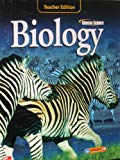
Concept explainers
To write:
The components and functions of the four main biological macromolecules in a table.
Introduction:
Carbon atoms join to form carbon molecules. Similarly, most cells have small carbon compounds that act as the building blocks for large molecules. Smaller organic molecules join together to form macromolecules or
Explanation of Solution
| Macromolecule | Components | Functions |
| Carbohydrates | Carbohydrates are compounds composed of carbon, hydrogen, and oxygen. Carbohydrates are grouped into monosaccharides, disaccharides and polysaccharides | Glucose is a monosaccharide that plays a central role in providing energy. In plants, a carbohydrate called cellulose provides structural support. |
| Proteins | Proteins are the building blocks of life. They are formed by amino acids. Amino acids are composed of carbon, oxygen, hydrogen, nitrogen, and sometimes sulfur. | About 15% of our total body mass consists of proteins and they are involved in nearly all body functions. The human cells contain about 10,000 different proteins that provide structural support, facilitate transportation of substances in the cells, and |
| Lipids | Lipids are composed of fatty acids, glycerol and other components. | The main function of lipids is to store energy. Plants have a waxy coating on their leaves which prevent the loss of water. Organisms require lipids for proper functioning. |
| Nucleic acids | Nucleic acids are made of repeating smaller subunits known as | Nucleic acids are complex macromolecules that are involved in storage and transmission of genetic information. Living organisms have two types of nucleic acids- Deoxyribonucleic acid (DNA) and Ribonucleic acid (RNA). |
The biological macromolecules are divided into four major classes - carbohydrates, proteins, lipids and nucleic acids.
Chapter 6 Solutions
Glencoe Science Biology, Teacher Edition, Hardcover Book Only
Additional Science Textbook Solutions
Campbell Biology: Concepts & Connections (9th Edition)
Chemistry: An Introduction to General, Organic, and Biological Chemistry (13th Edition)
Introductory Chemistry (6th Edition)
Campbell Biology (11th Edition)
Chemistry: Structure and Properties (2nd Edition)
Applications and Investigations in Earth Science (9th Edition)
- please draw in the answers, thank youarrow_forwarda. On this first grid, assume that the DNA and RNA templates are read left to right. DNA DNA mRNA codon tRNA anticodon polypeptide _strand strand C с A T G A U G C A TRP b. Now do this AGAIN assuming that the DNA and RNA templates are read right to left. DNA DNA strand strand C mRNA codon tRNA anticodon polypeptide 0 A T G A U G с A TRParrow_forwardplease answer all question below with the following answer choice, thank you!arrow_forward
- please draw in the answeres, thank youarrow_forwardA) What is being shown here?B) What is indicated by the RED arrow?C) What is indicated by the BLUE arrow?arrow_forwardPlease identify the curve shown below. What does this curve represent? Please identify A, B, C, D, and E (the orange oval). What is occurring in these regions?arrow_forward
- Please identify the test shown here. 1) What is the test? 2) What does the test indicate? How is it performed? What is CX? 3) Why might the test be performed in a clinical setting? GEN CZ CX CPZ PTZ CACarrow_forwardDetermine how much ATP would a cell produce when using fermentation of a 50 mM glucose solution?arrow_forwardDetermine how much ATP would a cell produce when using aerobic respiration of a 7 mM glucose solution?arrow_forward
 Human Anatomy & Physiology (11th Edition)BiologyISBN:9780134580999Author:Elaine N. Marieb, Katja N. HoehnPublisher:PEARSON
Human Anatomy & Physiology (11th Edition)BiologyISBN:9780134580999Author:Elaine N. Marieb, Katja N. HoehnPublisher:PEARSON Biology 2eBiologyISBN:9781947172517Author:Matthew Douglas, Jung Choi, Mary Ann ClarkPublisher:OpenStax
Biology 2eBiologyISBN:9781947172517Author:Matthew Douglas, Jung Choi, Mary Ann ClarkPublisher:OpenStax Anatomy & PhysiologyBiologyISBN:9781259398629Author:McKinley, Michael P., O'loughlin, Valerie Dean, Bidle, Theresa StouterPublisher:Mcgraw Hill Education,
Anatomy & PhysiologyBiologyISBN:9781259398629Author:McKinley, Michael P., O'loughlin, Valerie Dean, Bidle, Theresa StouterPublisher:Mcgraw Hill Education, Molecular Biology of the Cell (Sixth Edition)BiologyISBN:9780815344322Author:Bruce Alberts, Alexander D. Johnson, Julian Lewis, David Morgan, Martin Raff, Keith Roberts, Peter WalterPublisher:W. W. Norton & Company
Molecular Biology of the Cell (Sixth Edition)BiologyISBN:9780815344322Author:Bruce Alberts, Alexander D. Johnson, Julian Lewis, David Morgan, Martin Raff, Keith Roberts, Peter WalterPublisher:W. W. Norton & Company Laboratory Manual For Human Anatomy & PhysiologyBiologyISBN:9781260159363Author:Martin, Terry R., Prentice-craver, CynthiaPublisher:McGraw-Hill Publishing Co.
Laboratory Manual For Human Anatomy & PhysiologyBiologyISBN:9781260159363Author:Martin, Terry R., Prentice-craver, CynthiaPublisher:McGraw-Hill Publishing Co. Inquiry Into Life (16th Edition)BiologyISBN:9781260231700Author:Sylvia S. Mader, Michael WindelspechtPublisher:McGraw Hill Education
Inquiry Into Life (16th Edition)BiologyISBN:9781260231700Author:Sylvia S. Mader, Michael WindelspechtPublisher:McGraw Hill Education





